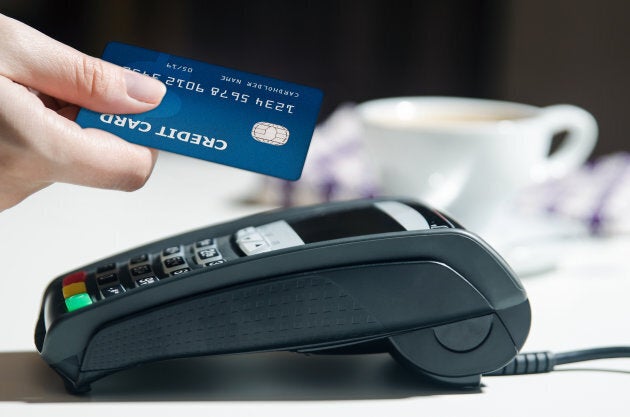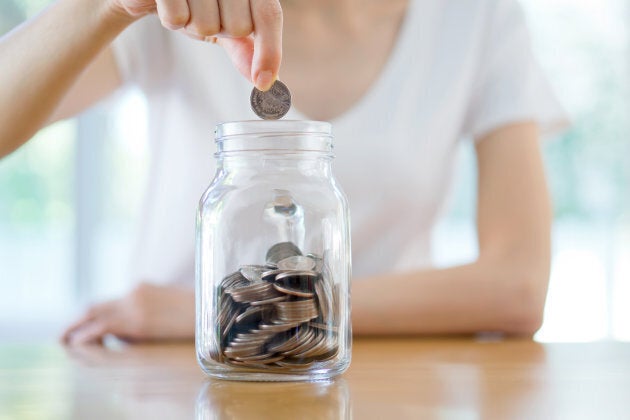Ever checked your bank balance only to realise you have $2.18 to last you to the next week? We hear you.
In our 'tap and go' society, buying things (and losing track of how much you spend) has never been easier.
In fact, according to ME Bank's 12th biannual Household Financial Comfort Report, one in two Australians have no spare cash at the end of each month, spending all of their income before the next payday rolls around (and sometimes even more). And with power prices and mortgage rates on the rise, it's a trend that doesn't appear to be going anywhere soon.
So how do you break the cycle of living paycheck to paycheck? The good news is it is possible. The bad news is you're going to have to work at it.
Have a budget
Yeah, yeah, we know it sounds boring, but when it comes to making your money last, budgeting is key.
"Have a budget. I say this all the time, but it's so important," Jenny Brown, CEO of JBS Financial Strategists told HuffPost Australia.
"Where people get into trouble is when they don't know how much they are spending. It's a trap we are seeing a lot of people fall into. But if you can make a budget and stick to it, it can really help you keep track of expenses. It requires discipline, but it works."

While Brown recommended going old-school and drawing up a budget on an Excel spreadsheet, she also said there were plenty of other options making budgeting more accessible while on the go.
"There are a lot of free apps around where you can actually track where your money is going and what you're spending it on," she said. "This can really help you understand what your limitations are and what [boundaries] you need to stay within."
Hide your credit cards
"If you're not good with credit cards, don't take them out," Brown advised. "Put them your in bottom drawer, or as one of my advisers has said in the past, put them in a plastic container, fill it with water and put it in the freezer.
"This means you'll have to wait for the whole thing to defrost before buying something, meaning you have less chance of making impulse purchases. Sure, it's still there if you need it, buy it's just that little bit removed."

Brown also recommended fighting the temptation to agree to large credit card limits.
"Credit cards can be one of the biggest traps to fall into," she said. "We see people come in with massive limits which is a real worry. Do you really need that?
"It's much better to have a smaller limit, like one month of your salary or something like that. Just make sure the limit is appropriate to what you're owning and what you can afford."
Save before you spend
According to Brown, often where people run into trouble isn't necessarily the management of day to day finances, but when they run into an unexpected expense.
"As such -- and I know it's hard -- but it's really worthwhile to put 10 percent of your salary into a savings plan. Then you have emergency money you can fall back on," she said.

"We all have expenses that unexpectedly crop up. You never know when all of a sudden you get in your car and the light goes on telling you you need new break pads. Then you're up for additional costs you didn't realise and didn't budget for.
"That's why it's so helpful to have a slush fund you can build up over time,
"Of course, if you can afford to meet those unexpected expenses through normal cash flow that's great, otherwise you have that extra money which can really help you out when the times comes."
Cut down on everyday luxuries
Much like budgeting, this is something a lot of us know we should do but can't bring ourselves to actually commit to. However, as Brown points out, those daily coffees and lunches from the food court do add up over time.
"Why go out and buy a coffee every day? That adds up right through the year," she pointed out. "It's not like there aren't other options. There are so many good coffee pods and things like that around that would be the fraction of the cost.
If you add a coffee at $4.50 and lunch at $10 for four days a week, 48 weeks a year... that's $2,784 you could have otherwise have saved.
"Taking your lunch to work is another one. That's saving eight to 12 dollars a day. In the city, probably a lot more."
However, that's not to say you have to deny yourself everything, all the time.
"If you want to treat yourself to Friday lunch with the rest of your team, that's great," Brown said. But it needs to be once a week, not every day.
"If you add a coffee at $4.50 and lunch at $10 for four days a week, 48 weeks a year... that's $2,784 you could have otherwise have saved. As much as people like to say 'oh it's only $4'... loose change adds up."